Here comes L.A.’s big sports weekend
May 17, 2012
You may have heard that this weekend will be “Sportsageddon”—the latest end-of-times-themed Los Angeles traffic snarl, spawned this time by a confluence of marquee sporting events. While much of the focus has been on downtown near Staples Center, motorists in other parts of the city should prepare for another obstacle on Sunday, May 20—the final stage of the 44-mile Amgen Tour of California professional bike race.
The race stage begins on Rodeo Drive in Beverly Hills at 9:30 a.m., and will travel east through the city before finishing at L.A. Live at about noon—just in time for the L.A. Kings playoff game at the Staples Center, to be followed later by the Clippers game. (Oh, and there’s a Dodgers game at the stadium on Sunday, too.)
Rolling street closures will accompany the bikes along the way—including the closure of Hollywood Boulevard.
This detailed map shows the route and times of expected closures, and you can also keep up with closures and traffic conditions in “real time” with the Los Angeles Department of Transportation’s traffic information site.
Meanwhile, amateur cycling enthusiasts who want to plunge into the spirit of the race will be allowed to ride open streets downtown before the pros arrive, from 8 a.m. to 9:30 a.m. Sunday. The downtown circuit falls into Segment 6 of the race, with closures on parts of Hill Street, Olive Street, Olympic Boulevard, Pico Boulevard and 11th Street in the area between Pico and Temple. If you’d like to pedal the five-mile circuit, there is still time to sign up and join in.
Those who want to be part of the fun, but don’t want to brave the traffic, should plan their trip with Metro. The agency’s blog, The Source, has specific advice on how to use transit to avoid the closures.
Posted 5/17/12
Voter registration’s a click away
May 16, 2012
You go online to post your vacation photos, buy birthday gifts and share your relationship status.
But if you want to use the Internet to register to exercise one of the most fundamental rights of American citizenship—casting a vote—you’ve been out of luck.
Until now.
The county is embarking on a project with the California Secretary of State to make online voter registration a reality here before the November presidential election.
The $270,873 county program, paid for by federal funds passed along by the state, is part of the California Online Voter Registration Project that seeks to make registration easier for the 9 million Californians—39% of the eligible population—who aren’t currently signed up to vote.
While it won’t change the requirement mandating registration 15 days before an election, it will make it easier for those who push it right up to the wire—like the thousands of county residents who tried, and failed, to register to vote in time for the last presidential election.
Updated 10/11/12: County election officials say voter registrations hit a one-month high in September, with 150,000 signing up, compared to 120,000 in the previous record month, September, 2008. The increase is due, at least in part, to the ease of online registration, according to the Registrar-Recorder/County Clerk. The registration deadline for the Nov. 6 election is Oct. 22. Click here to register.
“In 2008, we received literally several thousand registration forms the day after the registration cutoff,” said Registrar-Recorder/County Clerk Dean Logan. “These were people who, at the point that they were engaged and interested in becoming active voters, the system in essence failed them, through an administrative deadline. It’s hard to measure the loss of that. You wonder, will they come back if they didn’t get to vote in the one election where they were interested?”
The system will allow would-be voters to sign their registration forms electronically using e-signatures on file with the DMV. A widget on the county’s voting website, www.lavote.net, will send them to the Secretary of State’s site to register online beginning in late August or early September, Logan said.
The move to electronic registration is part of a broader movement to modernize the nation’s voting systems and remove barriers to electoral participation. Only 10 states, including Washington, Oregon and Arizona, currently have online registration. California is in the process of becoming the 11th, under Senate Bill 397 passed last year. Los Angeles, Orange and Trinity are the three counties that will be pioneering the process for their respective voting systems, before the whole state follows suit.
In a letter to the Board of Supervisors, which this week approved the county’s participation in the program, Logan and county Chief Information Officer Richard Sanchez said that younger voters between the ages of 18 and 25 are most likely to take advantage of the online registration option.
But Logan said it will also make it easier for anyone who moves within the state to keep their voter registration up to date.
Posted 4/17/12
Assessor hit for faulty forecasts
May 16, 2012
 When it comes to forecasting the rise and fall of home prices, the Los Angeles County Assessor’s Office needs to get its house in order.
When it comes to forecasting the rise and fall of home prices, the Los Angeles County Assessor’s Office needs to get its house in order.
That was the conclusion of a team of consultants hired by the county to investigate how the assessor came to produce two widely different predictions of money that would be generated by this year’s property taxes. In one fell swoop, the amount of growth forecast for property values plunged from $18.6 billion in December to $5.1 billion in April—an unwelcome surprise for financially-strapped local government entities, including the county, that rely on the funds.
An irate Board of Supervisors last month called the disparity shocking and unprecedented, and ordered a top-to-bottom audit of the office run by Assessor John Noguez, who already was under fire for allegedly giving special treatment to certain property owners, an accusation he has denied.
On Tuesday, the first phase of that audit was presented to the supervisors, and it did not paint a flattering portrait of assessor operations.
Consultants from the firm Rosenow Spevack Group found numerous flaws in how the two forecasts were reached—from failing to account for home price volatility at the close of last year to making errors in math. RSG, which was retained by the county’s auditor-controller, concluded that the December forecast of 1.77 percent revenue growth was too high and that the April forecast of .49 percent growth was too low.
Based on more complete information, RSG and the Assessor’s Office now agree that rate of growth in property tax revenue will be closer to 1.14%.
The most significant forecasting error, according to RSG, was the assessor’s failure to recognize, and account for, an unexpected decline in value for hundreds of thousands of parcels in the final quarter of last year. The assessor’s office had based its December forecast on information generated between January and September 2011, when prices were relatively stable, without examining available sales data or economic analyses for the latter part of the year. The result: an overly optimistic forecast, Jim Simon of RSG told the board.
Mistakes were also made in the April forecast, he said, including an overstatement of the estimated drop in the property tax roll because of “a calculation error.”
In a letter accompanying RSG’s report, Auditor-Controller Wendy Watanabe noted that, during the past several years, the assessor’s office has been hit with numerous retirements in key management roles, “which has resulted in significant turnover in the staff who prepare the roll forecasts.” Watanabe’s office is now examining the management of the assessor’s office, including whether it has been hurt by the controversies surrounding Noguez, who, along with other members of his staff, are under investigation by the District Attorney’s public integrity unit.
That a controversy over forecasts could even flare seems unique to Los Angeles government.
According to RSG, it appears that no other assessor in the state is producing multiple forecasts like Los Angeles. For 20 years, the L.A. County assessor has been producing three of them as a way to help the county’s Chief Executive Office prepare the county’s preliminary budget. Under state law, an assessor is only required to produce an annual forecast in May, if asked to do so by a governing body of a taxing agency.
“Their primary function is to be assessors” evaluating properties, Simon said, “not forecasters.”
Still, with the likelihood that multiple forecasts in Los Angeles County will continue, Simon’s team suggested a number of ways for the assessor to increase accuracy. They include: using the most current data available; evaluating properties on a more geographic-specific level, obtaining input from economists and other experts, and providing a range of values in forecasts, instead of settling on a specific number.
Posted 5/16/12
Riding to the rescue for 100 years
May 16, 2012

Bathing beauties were still posing on county lifeguard trucks in 1959. Photo/LA County Lifeguard Assn.
Summer isn’t summer in Los Angeles County without the bright yellow vehicles of the beach patrol.
“Iconic” is how Chief Lifeguard Mike Frazer described them last week as the Board of Supervisors gave the Department of Beaches and Harbors authority to sign a proposed agreement to take ownership of the fleet’s latest additions—45 custom-built Ford Escape hybrids that the county has leased since 2008. Under that proposed agreement, Ford Motor Co. would continue to advertise itself as the “Official Vehicle Sponsor” of the L.A. County beach lifeguards. So far, however, Ford has not agreed to a transfer of ownership.
Outfitted with state-of-the-art rescue equipment, the vehicles have saved not only lives but also more than $267,000 a year in fuel costs. “We’ve come a long way,” Chief Frazer says.
In fact, as the photo gallery below shows, beach rescue vehicles have come farther than Southern Californians might imagine. And to look back at their history is to dip into the region’s evolving—and sometimes dangerous—relationship with the beach.
Arthur Verge, an El Camino College history professor and veteran county lifeguard, notes that there was a time, not so long ago, when Southern Californians regarded the ocean as a frightening place that was best admired from afar. “Drownings were sadly common,” Verge says, adding that those who did go into the water often had no idea how to swim or how to get out of the powerful rip-currents that swept them out to sea in their heavy wool bathing outfits.
Professional ocean lifeguards didn’t even exist here until the early 1900s, when the City of Long Beach and real estate developers Abbot Kinney and Henry Huntington began paying “lifesavers” to reassure tourists outside the Long Beach Plunge and to promote the then-new developments of Venice and Redondo Beach.
Notably, Kinney and Huntington turned in 1907 to George Freeth, a celebrated Hawaiian surfer who not only trained L.A. County’s first generation of lifeguards but also pioneered rescue response.
“While fire departments were using horse-drawn rigs,” Verge says, “George Freeth, as early as 1912, was patrolling the beaches of Redondo, Hermosa and Manhattan Beach with a motorcycle, carrying a metallic rescue can in a special sidecar.”
Other early lifeguards were more low-tech.
“Santa Monica’s first lifeguard, ‘Cap’ Watkins, patrolled the beach on horseback,” Verge notes. “And George Wolf, the first Los Angeles city lifeguard, rode back on forth from Venice to El Segundo on a bike.”
By the late 1920s, both the city and county had lifeguards and trucks that ferried their gear along the boardwalks. That gear was stretched thin in the 1930s as the county lifeguards took over the beaches in the economically struggling South Bay.
“We didn’t get any new vehicles until the late ‘40s because World War II was on,” recalls Cal Porter, an 88-year-old retired county lifeguard and Malibu surfer. “If somebody had a bad rescue…we’d jump into this old 1933 International we had and head down Pacific Coast Highway. We’d be going as fast as we could, lights and sirens going—but all the other cars would be passing us.”
With wartime came the 4-wheel-drive jeep, developed by Willys-Overland Motors for the U.S. Army. The Willys allowed lifeguards for the first time to skip the boardwalk and drive directly across the sand. The jeeps were redeployed onto county beaches in the late 1940s; some remained in use for the next twenty years.
By the 1960s, the county had a fleet of Ford trucks with special racks for lifesaving equipment. Beaches filled with Baby Boomers and, occasionally, the products of the era’s experimental mood: In 1970, the county bought two customized dune buggies from the designer Meyers Manx. “But they didn’t work,” Verge says. “Sand would get into the carburetor.”
Lifeguard operations consolidated in the mid-1970s under the county, which by 1975 had the world’s largest lifeguard organization—a distinction that brought marketing opportunities. Among them was the chance for car companies to become the “official” rescue vehicle supplier to the now renowned L.A. County beach lifeguards.
Kerry Silverstrom, chief deputy director of the county Department of Beaches and Harbors, says that in 1986, Nissan and the beach lifeguards signed an agreement. “They got name recognition, ad copy and the ability to say they’re the official vehicle of the County beaches,” she notes, “and we got to use their vehicles for free.”
Nissan’s deal—releasing 30 chrome yellow 4×4 King Cab lifeguard trucks and six light pewter Stanza wagons onto the county beaches—lasted until 1994, when Ford won the contract. Nissan got it back in 1999, but Ford made another comeback with the hybrid SUVs in 2008.
Frazer says lifeguards were accustomed to pickup trucks with gas engines, and concerned that sand might damage hybrids. “But one of our missions is to protect the environment, so we said, ‘Let’s see if this works.’ ”
He says the results have been striking.
“The visibility is amazing and the turning radius is almost twice what we had, so we can navigate crowds better,” he says. “It has traction even in places like Point Dume, which has a steep sloping beach. “
Silverstrom says the relationship with Ford has been a financial and environmental lifesaver as the economy and the Internet have made branding rights a tougher sell at beaches. As for the next generation of vehicles, Frazer says the lifeguards “continue to look at all the options.” After all, only 100 years have passed since George Freeth rode to the rescue on his motorbike.
Posted 5/9/12
Bug fare at the Bug Fair
May 16, 2012
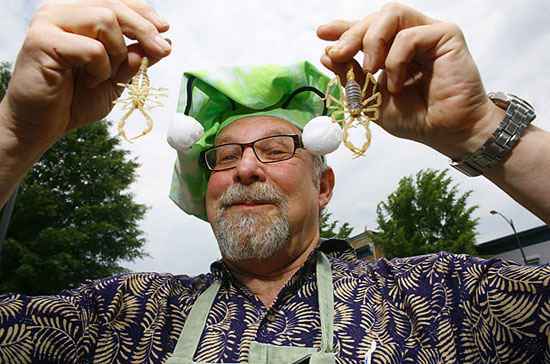
David George Gordon, who won last year's bug cookoff, is an ardent advocate of insect cuisine. Photo/Time
Fancy yourself an adventurous eater? The county’s Natural History Museum has something to challenge your palate at the 26th annual Bug Fair. That’s right—it’s time to grub on grubs.
The “Bug Chef Cook-Off” debuted at last year’s fair, and it’s back again in 2012 by popular demand. Three of the top entomophagists (bug chefs) from across the country are ready to go antenna to antenna with their best bug dishes.
They’re part of a burgeoning bug cuisine movement that’s grabbed the attention of publications including Time and The New Yorker, which have chronicled the efforts of those seeking to make insects palatable as human food for a variety of environmental, ethical and economic reasons.
One of the movement’s stars, David George Gordon, won last year’s cook-off at the museum with tempura-battered tarantula and teriyaki grasshoppers on rice noodles. Gordon, 62, an ardent bug consumption advocate, said hosting the cook-off is a very progressive move by the museum.
“In the United States and Europe it is an uphill struggle,” said Gordon. “Europeans have a bad attitude about bugs. But meat is basically muscle, whether from a tarantula or a cow. Tarantula has a similar texture to crab.”
Gordon, a science writer in the process of updating his Eat a Bug Cookbook, said a trip to Switzerland inspired him to add fondue to this year’s menu (think decadent, chocolate-dipped locusts).
Daniella Martin, the brains behind the Girl Meets Bug blog, is on her own mission to bring critter cuisine to the public. Her YouTube videos offer step-by-step instructions on how to cook and eat things like wax worm tacos and fried scorpion.
The third contestant is David Gracer, 47, of Rhode Island. He is the founder of Small Stock Foods, a company that arranges educational programs, bug tastings, bug catering and bug food sales. He has appeared on “The Colbert Report” and the “Tyra Banks Show” to promote human consumption of bugs. According to Gracer, the reasons to eat insects are both environmental and culinary.
“It’s a good way of dealing with overpopulation by conserving our water and food resources,” said Gracer. “On the other hand, there is also the adventure and fun of eating something new. When you eat insects you are eating closer to nature.”
Gracer’s dishes will feature wax worms, Ugandan katydids (“surprisingly rich, they taste a lot like crispy French fries”) and a surprise ingredient—maybe giant ants, he said.
In addition to competition dishes, the chefs plan on providing courageous attendees with free samples, like Gordon’s famous Chirpy Chex Party Mix. (The “chirpy” part, as you may have guessed, is roasted crickets.)
The Bug Fair, which bills itself as the biggest bug festival in North America, will provide plenty of other entertainment, too—entertainment that doesn’t involve eating or watching other people eat bugs.
The theme for Bug Fair 2012 is the “Year of the Fly,” and if that conjures thoughts of biting horseflies or pesky gnats, museum curator of entomology Dr. Brian Brown wants a chance to change your perspective.
“A few bad apples like mosquitoes that have ruined our thinking about flies,” said Brown. “Most are neutral or beneficial to humans.”
For example, Brown will be presenting “flower flies,” which look a lot like wasps or bees. Brown said flower flies are important pollinators that also feast on aphids— the small, plant-devouring pests that are the bane of gardeners everywhere. Brown also said the flies are a popular subject for amateur naturalists who have moved beyond the most popular species like birds and butterflies.
Other attractions at the event include bug pinning demonstrations, bug-sniffing dogs, specimen handling opportunities and “Supersized Insect Walkabouts”—costumed performances that include a giant monarch butterfly on stilts. The museum and its insect exhibits will also be on display, along with a related special exhibition of jewel-encrusted butterfly brooches in the Gem and Mineral Hall.
The Bug Fair runs from 9:30 a.m. to 5 p.m. on Saturday, May 19, and Sunday, May 20. Tickets are $12 for adults, $9 for seniors and students, $8 for youth ages 13 to 17 and $5 for children ages 5 to 12. Kids under 5 are free. Parking is $8 or $10 in adjacent lots, but attendees may opt to try Metro’s new Expo Line, which has two stops just a short walk from the museum.

Out of the frying pan and into the belly? Maybe, if the eating public decides that bugs are food. Photo/Time
Posted 5/16/12
Get ready to ramp up on Wilshire
May 11, 2012
We got through Carmageddon last summer. Now it’s time to navigate Ramp Jam.
Long-running closures of the 405 Freeway’s Wilshire Boulevard ramps are set to begin on Friday, June 22, bringing fresh challenges to an intersection that’s already among the nation’s worst.
Anxious residents and employees in the area have been girding for the start of the ramp work for months. Some online wags have dubbed it The Rampture, while others who live nearby refer to it ominously as “the next shoe to drop.”
Whatever you call it, the work is needed to construct sweeping, 30-foot-high flyover ramps that will improve traffic flow and safety at the perennially jammed intersection, as this Metro video explains. Currently, vehicles moving on and off the freeway must execute a complicated merge with heavy traffic on Wilshire—a situation the new flyover ramps are intended to alleviate.
The first of eight ramps to close will be the westbound Wilshire on-ramp to the northbound 405 and the northbound 405 off-ramp to westbound Wilshire. Both will be out of commission for 90 days starting June 22. Work on the other ramps will proceed in segments after that, with planned closures ranging from 90 days to 14 days. Delays and detours are expected as workers demolish and rebuild the ramps, working around the clock to finish the job.
In all, work on the Wilshire ramps is expected to take about a year.
Supervisor Zev Yaroslavsky is set to appear with other officials at a news conference today, Friday, May 11, to present ways of coping with the extended closures.
The official mantra for getting through it all: Plan ahead. Adjust your travel times. Share the ride.
In other words, get ready for a long, blocked summer—and then some.
The June 22 start date was chosen, in part, because it will come after the end of the academic year for LAUSD and private schools in the area. The work also will be getting underway following the mid-June flurry of commencement activity at UCLA.
Meanwhile, Metro’s Commute Services Department is seizing the moment and hoping to help residents, workers and employers navigate the disruption, and, perhaps, discover some new ways of getting around that will outlast the temporary pain during construction.
Then, later in the summer, Carmageddon will make a return appearance. The weekend shutdown of the entire freeway is the flipside to last summer’s successful, shorter-than-expected closure required to demolish one side of the Mulholland Bridge. This summer, workers will tear down the other side of the bridge during Carmageddon II. A date for the sequel has not yet been announced.
When completed in 2013, the 405 Project is expected to expand and modernize the heavily-travelled stretch of freeway that runs through the Sepulveda Pass, from the 10 Freeway to the 101 Freeway. The $1.034 billion project will add a 10-mile northbound carpool lane along with lane and ramp improvements and three rebuilt, seismically reinforced bridges across the freeway.
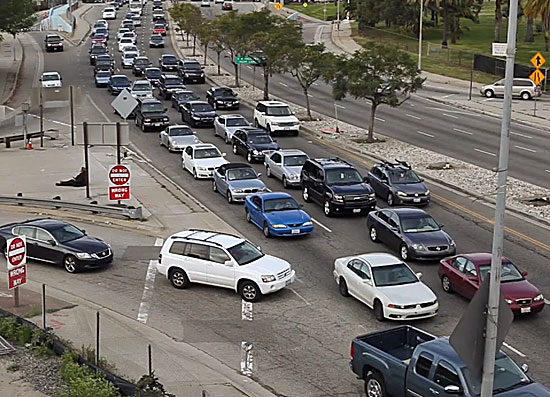
Where giants collide: some of the heaviest traffic in the nation occurs where Wilshire and the 405 meet.
Posted 5/11/12
Bike Week’s cycle of celebration
May 10, 2012
Bicycles keep gaining traction in Los Angeles County. With the most recent edition of CicLAvia behind us, it’s time to celebrate pedal power during the 18th Annual Bike Week, May 14-18.
Metro, the Los Angeles County Bicycle Coalition and other community organizations are partnering for five days of bike festivities, beginning Monday with a 10 a.m. kick-off celebration at the University of Southern California’s Galen Center. New initiatives to promote bicycling will be announced at the event.
After that, on Tuesday, clergy of various religions will perform the 9th Annual Blessing of the Bikes at Good Samaritan Hospital from 8 a.m. to 9:30 a.m. Cyclists who attend can also receive the earthly blessings of a free bike check-up and breakfast.
On Wednesday, cyclists can “test pedal” the new Expo Line bike lanes on a mid-city ride, which meets at the Expo Park/USC station at 8 a.m. and departs at 8:30 a.m.
Thursday, May 17, is Bike to Work Day. Metro and other local transit agencies will give free rides to anyone with a bike or a helmet, and local cycling organizations and businesses will host dozens of pit stops with free refreshments and giveaways. After the workday is over, participants can join fellow riders at one of several after parties.
The week concludes on Friday with Bike to School Day, which takes aim at reducing traffic congestion in school zones.
Bike Week will give the public 5 days’ worth of reasons to avoid the hassles of driving while getting some healthy exercise with L.A.’s growing cycling community. To keep safe on the roads, check out these quick tips from Metro.
Posted 5/9/12
What your mother isn’t telling you
May 9, 2012

Say it with geraniums this year at the Arboretum, or explore some other Mother's Day options around the county.
She’ll smile, hug you and say thanks—maybe more than once.
She’s your mother, after all. But deep inside, you can’t help wondering whether your time-honored Mother’s Day brunch-and-bouquet routine has Mom thinking you’re just a little bit challenged in the creativity department.
Here’s your chance to change her mind. Los Angeles County facilities are offering a wide range of out-of-the-ordinary diversions to explore this Mother’s Day weekend.
For instance, it’s a great time to check out the 124 acres of the scenic Los Angeles County Arboretum & Botanic Garden. On Saturday and Sunday, May 12 and 13, the International Geranium Society will hold a Mother’s Day Geranium Show. Local hobbyists, enthusiasts and experts will display exotic varieties of the flower, cultivated from plants originating in South Africa. If your mother has a green thumb of her own, show her the new “Garden for all Seasons,” which demonstrates the latest in environmentally friendly, year-round cultivation of fruits and vegetables.
If your mother is a music lover, why not take her to the 9th Annual Mother’s Day Jazz & Blues Extravaganza at the John Anson Ford Amphitheatre? Every seat in the roofed, outdoor venue is no more than 94 feet from the stage and guests are welcome to bring a picnic. Purchase tickets online to save a few bucks.
If mom’s more an Earth mother type, perhaps she’d enjoy an outing to the Natural History Museum (and possibly getting there on Metro’s brand-new Expo Line). In addition to the new Dinosaur Hall (motherhood bonus points: the only known fossil of a pregnant plesiosaur), there’s also Hall of Gems and Minerals and the Insect Zoo to explore, along with the Butterfly Pavilion, which boasts 53 unique living species. For even more bonus points, take a walk down memory lane in the famous Exposition Park Rose Garden, directly to the south of the museum.
Outside these L.A. County offerings, there are other goings-on Mother’s Day weekend, like free babysitting and a spa Friday at UCLA’s Mother’s Week, a family bluegrass jam at the Fowler Museum and card-making and stories at the Craft and Folk Art Museum.
If you absolutely must do the brunch thing, combine it with a trip to lush and rustic Topanga Canyon, where the Will Geer Theatricum Botanicum Mother’s Day event features dance, music and circus performances.
Your mother has eaten eggs, muffins and toast before. She probably hasn’t seen an aerialist perform while she’s eating them. Now is as good a time as any to give her a brand-new experience. What a smart, cultured son or daughter you’ll be!
Posted 5/9/12
Benched Lakers star still on a mission
May 8, 2012

Billboards like this represent the continuing collaboration between Metta World Peace and Los Angeles County.
“I was 110 percent wrong,” the suspended Laker says of decking an opposing player with a nasty elbow to the head. “People can say what they want. I’m not going to get down on myself because I made a mistake. I’m not perfect. But it’s not going to stop me from talking about mental health.”
And the Los Angeles County Department of Mental Health suddenly has a teachable moment on its hands.
For more than a year, the player formerly known as Ron Artest has been in a very public partnership with the mental health department, appearing at high school assemblies and in public service announcements to encourage young people to be unafraid of seeking psychological treatment. Dozens of billboards and transit ads with World Peace’s picture, along with the NBA logo and the L.A. County seal, carry the catchphrase: “You can do it.”
The campaign was, in a sense, testimony to the public rehabilitation and redemption of Artest, who was famously suspended for 86 games for brawling with fans in the Detroit Piston’s arena in 2004 when he played for the Indiana Pacers. Last year, World Peace—who credits a team of therapists for helping him with everything from parenting skills to anger management—was honored with the NBA’s good citizenship award.
But on Sunday, April 22, that goodwill vanished the moment James Harden of the Oklahoma City Thunder crumpled to the hardwood of Staples Center. World Peace had been pounding his chest after a dunk when he let loose with a powerful round-house elbow behind the left ear of Harden, who’d come face-to face with the pumped-up Lakers forward.
The fallout was swift. World Peace, suspended for 7 games, was widely criticized on TV, talk radio and internet postings as a thug who’d lost the right to be called World Peace, a fraud who preached mental health but who indulged his demons. He was, they said, back to being Ron Artest.In an a column for ESPN.com, former Lakers’ great Kareem Abdul-Jabbar put it like this: “In returning to his old ways, Metta has wasted all the goodwill, including the J. Walter Kennedy Citizenship Award, he earned when he was on his best behavior.” A sports columnist for the Orange County Register, Jeff Miller, was equally harsh, saying that World Peace had “tainted all the good things he has achieved in promoting mental health.”
But inside the Los Angeles County Department of Mental Health, the view was decidedly more nuanced. Experts there emphasized that mental health recovery is a process often accompanied by relapse.
“When I saw what happened in the game, I thought, man, the adrenaline just got out of control,” said Dr. Marvin Southard, the department’s director. “It was an ugly event but it seemed to me that it was not purposeful, rather an artifact of the emotion of the moment.”
For all of us, Southard said, “our aspirations and desires to do the right thing don’t always live up 100 percent to our actions…It doesn’t happen all at once. The goal is for the actual self to get closer to the ideal self day by day.”
As for the agency’s partnership with World Peace, Southard said: “I don’t feel embarrassed that the department is connected to someone who makes a mistake. I don’t know who hasn’t made one.”
For his part, World Peace said in an interview with Supervisor Zev Yaroslavsky’s website that the incident occurred simply because he got “over excited” after slamming down several dunks that reminded him of his performance as a younger player.
“I never thought I could reach that plateau again,” he said, adding: “It was pure excitement.”
World Peace said that, with his much improved game, he’s now working “all the time” with his therapist to keep from getting overtaken by emotion, as he did last month and in his earlier years. “She’s trying to show me how to play with less passion and still be effective.”
And that’s no easy lesson, he said, because this is “no kids’ game. I know people who throw more elbows than me. It doesn’t feel like a game to us. It feels like life or death.”
As he tries to reconcile the disconnect between his public image and his public mission, he can’t help feeling that he’s being judged more harshly than he should be in the situation.
“The only issue I have is people trying to single me out, trying to tarnish what I’m trying to do in the community. They try to destroy everything I’m working for.”
And those things, he said, “are bigger than basketball.”
Posted 5/8/12




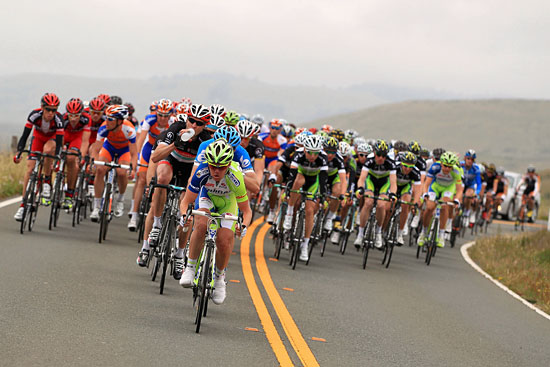

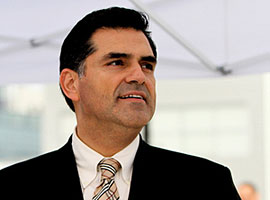
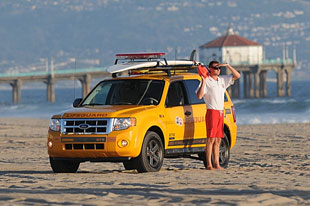










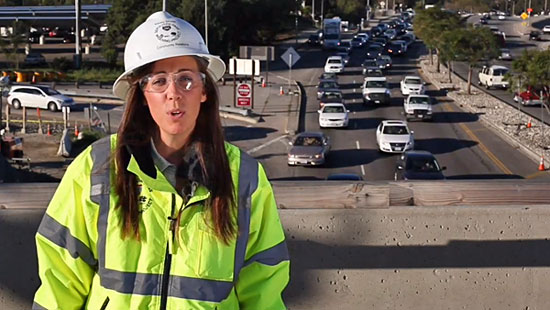

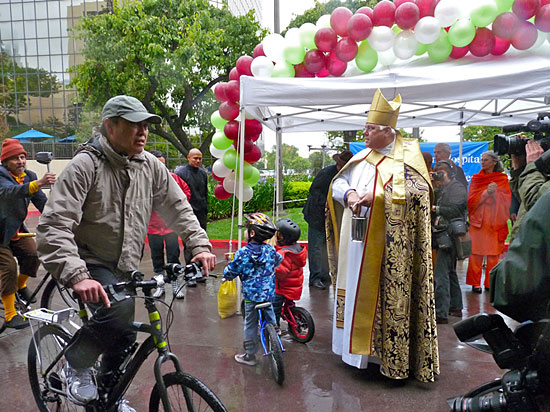






 Check for the latest closure information
Check for the latest closure information








